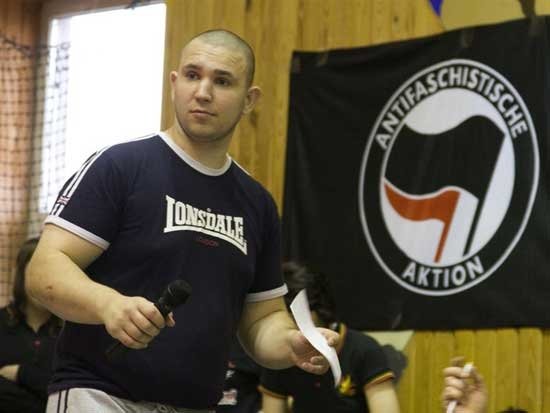The November 16 murder of Ivan Khutorskoi in Moscow underscores the growing threat of ultra-nationalist violence in the Russian Federation.
Khutorskoi, a well-known anti-fascist activist and a leader of the Red Anarchist Skinheads (RASH) group, was gunned down near the entrance of his home. Readers of this article in the United States should remember that Denver radio talker Alan Berg was killed by members of The Order in June 1984 in just such a fashion. Mississippi NAACP leader Medgar Evers was similarly assassinated as he was coming home in June 1983 by Byron De La Beckwith, a white supremacist with multiple affiliations. Each of these incidents was part of a larger pattern connected to racist and far right political movements. And understanding this problem in Russia today provides an essential piece of the looking glass needed to conquer this problem in the USA.
As I have noted before, the current situation is rooted in the collapse of the Soviet Union and the independence of territories and countries that had been linked to Greater Russia since the time of the Tsars. The end of Soviet Union occasioned a period of dire–famine like in some instances–economic circumstances. Society was in crisis and the birthrate declined sharply and suicides were up. As the Baltic states, Ukraine, and Georgia and others peeled off one by one, ultra-nationalist organizations promoted their own plans for restoring the “greatness” of the past. Racism against people from the Caucuses countries and regions became overt and commonplace. Once again, anti-Semitism emerged, as conspiracy theories about Jews supplemented the standard “anti-Zionist” rhetoric of the Soviet era.
Dozens of organizations–from well-known outfits like Pamyat to Barkashov’s Russia National Unity Party to Zhironovsky’s so-called Liberal Democrats–ran candidates for parliament and fostered paramilitary units in the streets of the cities at the same time. Their ideological permutations ranged from an odd form of Soviet revanchism known as National Bolshevism to a particularly xenophobic incarnation of the Russian Orthodox Church. One and all appealed to a form of ultra-nationalist sentiments remarkably akin to the white nationalism at work in American society.
Each year the violence has accelerated. The Sova Center for Information and Analysis in Moscow counted 444 victims of racist attacks in 2005; 38 of them killed. In 2007 that number jumped to 85. In 2008, 97 people were murdered in racist attacks, the greatest number natives of Central Asia. Vandalism has remained high, and Jewish sites have been targeted most often. In the first four months of 2009, the Sova Center tracked 23 killings by racists and ultra-nationalists, including the daylight shooting last January of Stanislav Markelov, a 34-year old human rights attorney, and Anastasia Barburova, a 25-year old reporter. By any measure, the most recent murder of Khutorskoi was anything but a tit-for-tat among fascists and anti-fascists, as some reports have intimated.
While the presidential elections last March gave the most votes to Dimitry Medvedev, a veritable junior partner to the Valdimir Putin, Vladamir Zhironvsky took a noticeable third place, with almost seven million votes, 9.4% of the total. Zhironovsky has made a career of meeting with and coddling white nationalists from the United States such as David Duke. Whatever the meaning of Putin’s own form of Russian nationalism, Zhironovsky’s continued standing in the polls points at a problem far deeper and much wider.
Leonard Zeskind is President of the Institute for Research & Education on Human Rights and author of the new book, Blood and Politics: The History of the White Nationalist Movement from the Margins to the Mainstream.
This article originally appeared on The Huffington Post.





